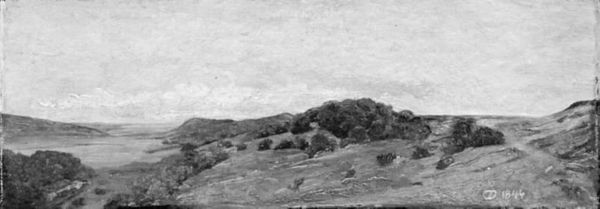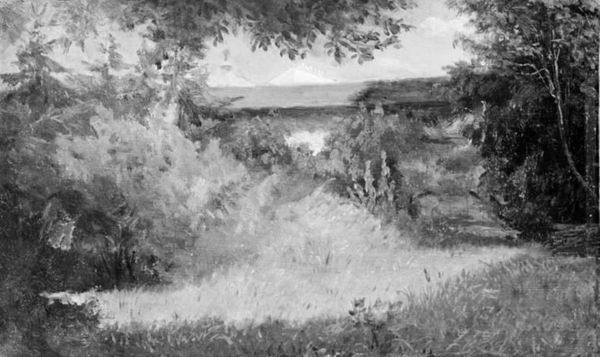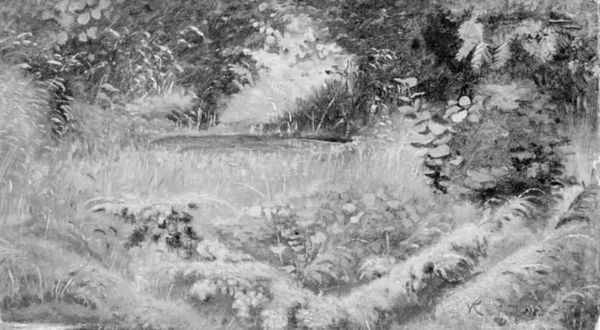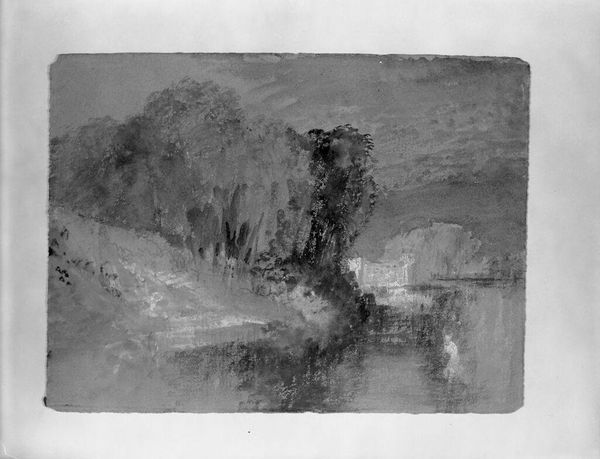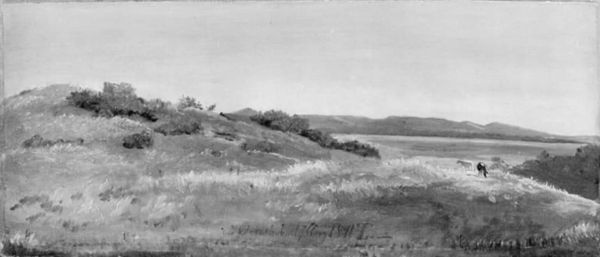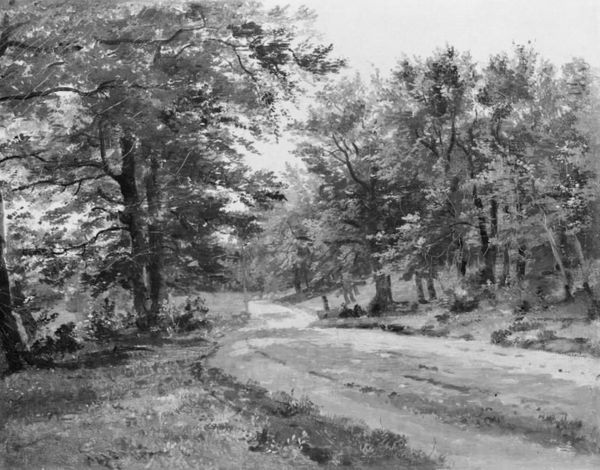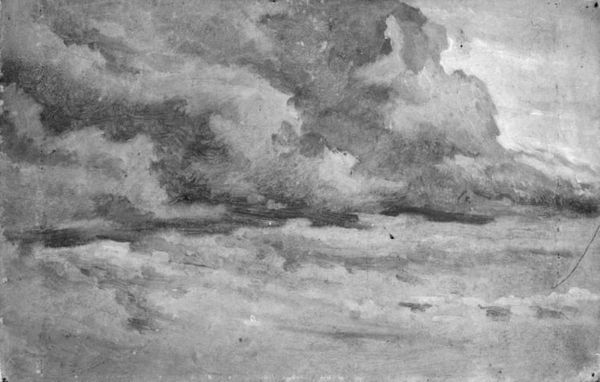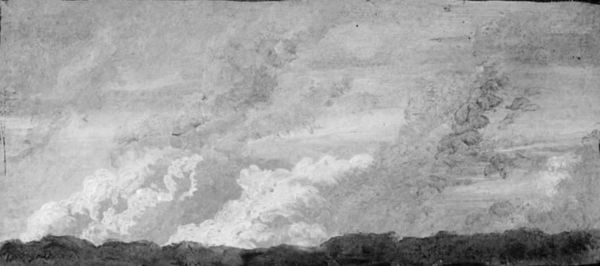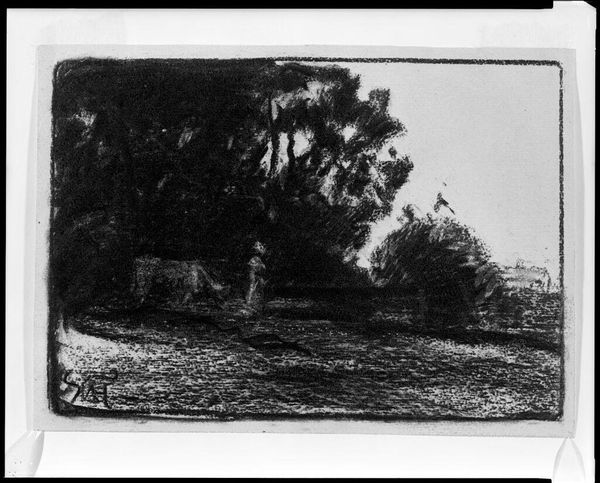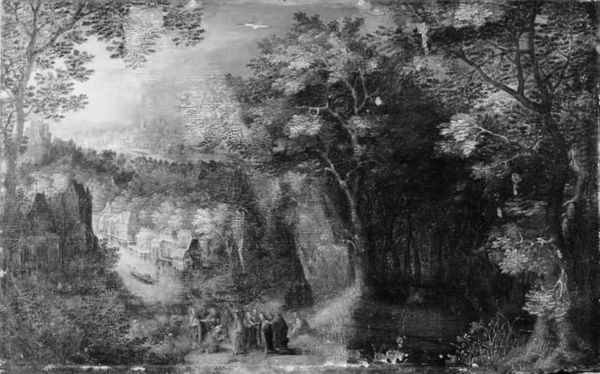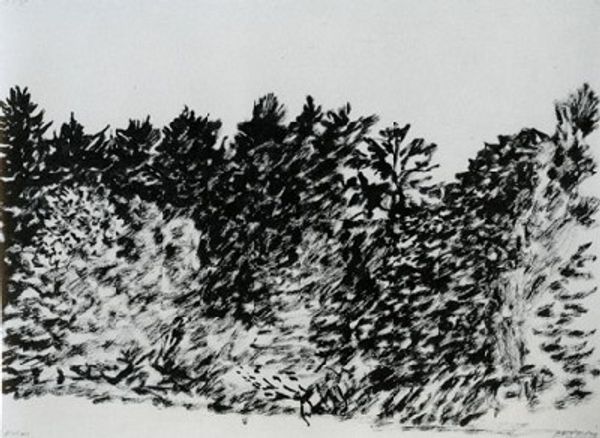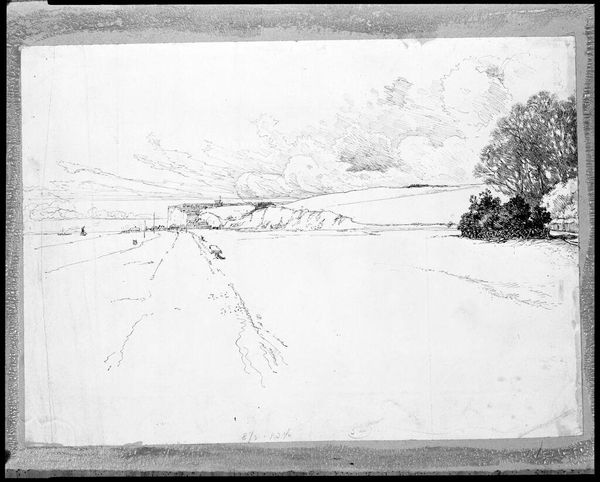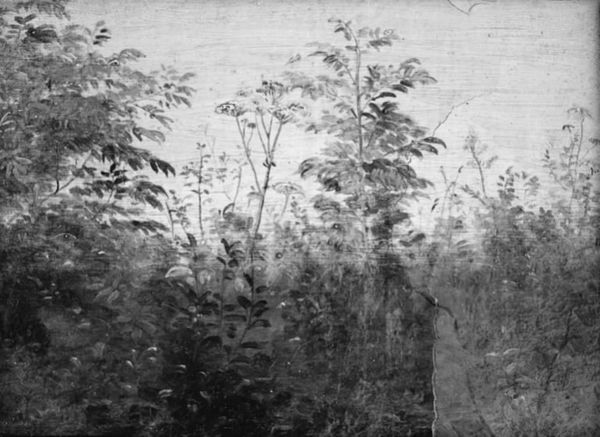
painting, plein-air
#
painting
#
impressionism
#
plein-air
#
landscape
#
monochrome colours
#
black and white
#
northern-renaissance
#
monochrome
#
natural form
#
monochrome
Dimensions: 5.5 cm (height) x 14.5 cm (width) (Netto)
Editor: Here we have Lorenz Frølich's "The Fringe of a Wood", painted sometime between 1835 and 1908. It's a landscape painting, done en plein-air. The muted monochrome palette really gives it a subdued, almost melancholy mood. How do you interpret this work, especially given its historical context? Curator: Well, considering Frølich’s lifespan, this painting occupies a fascinating period of transition in European art. While the monochromatic palette may speak to an earlier tradition, the plein-air technique signals the rise of Impressionism and a new focus on capturing fleeting moments. I see it as an intriguing intersection of artistic styles and societal shifts. What do you think the adoption of "Impressionism" for his art meant during the Northern-Renaissance period? Editor: That's an interesting point! I hadn't thought about it that way. I was thinking that maybe the lack of colour makes it seem older, but perhaps he was consciously referencing past traditions. What impact do you think the choice of depicting the natural environment had at the time? Curator: Landscape painting during this time became increasingly popular. The rapid industrialization and urbanization of Europe spurred a romanticized vision of nature as an escape, a counterpoint to the chaos and grime of modern life. Artists often portrayed nature as a space of freedom, contemplation, and spiritual renewal. Would you say that the museum setting shapes our perception of the message in this painting? Editor: Absolutely. The act of putting a landscape like this in a museum automatically elevates it. It goes from a simple observation of nature to something worthy of study and contemplation. Plus, being in a museum implies a certain level of cultural or historical significance. Curator: Exactly! Museums aren’t neutral spaces. They actively shape how we understand art and its place in the world. Considering this piece, perhaps our discussion will inspire us to see similar works of art in museums. Editor: I think I will definitely be looking at these monochrome paintings with a new lens. Thank you!
Comments
No comments
Be the first to comment and join the conversation on the ultimate creative platform.
